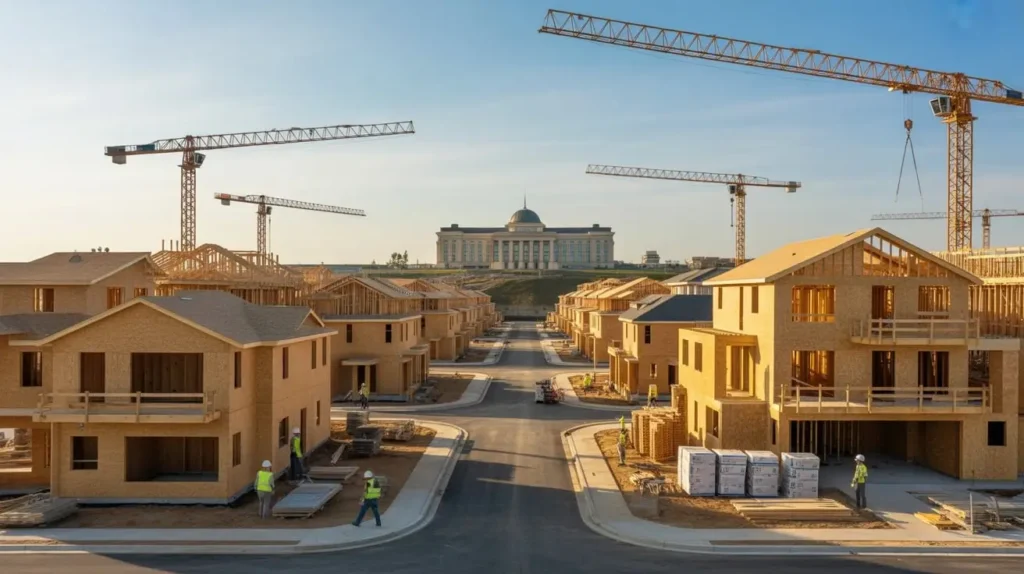How Inflation and Federal Policies Affect Your Construction Loan Options
When planning to build a home, one of the most important factors to consider is the cost of financing. Construction loans are sensitive to economic changes, particularly inflation and federal policies set by the government and the Federal Reserve. These factors can influence interest rates, material costs, and overall borrowing power, directly impacting your budget and project timeline. By understanding how economic trends shape Construction Loan Options, you can plan strategically, choose the right lender, and secure favorable terms for your home-building journey.

Content
How Inflation Impacts Construction Loan Options
- Higher Interest Rates
Inflation drives up borrowing costs. When the economy experiences rising prices, lenders typically increase construction loan interest rates to offset the risk. - Increased Construction Costs
Inflation pushes up the cost of building materials like lumber, steel, and concrete, as well as labor expenses. This means you may need a larger loan to cover project expenses. - Budget Uncertainty
With fluctuating prices, borrowers must include contingency reserves in their loan applications to account for unexpected cost hikes.
Role of Federal Reserve Policies
The Federal Reserve uses monetary policy tools to manage inflation and stabilize the economy, and these decisions directly affect construction loans.
- Raising Interest Rates: When inflation is high, the Fed raises benchmark rates, making loans more expensive.
- Lowering Interest Rates: During economic slowdowns, lower rates encourage borrowing and building activity.
- Credit Availability: The Fed’s stance influences how strictly banks enforce lending requirements.
Government Policies That Affect Construction Loans

- Housing Regulations: Policies that encourage new housing developments can make construction loans more accessible.
- Tax Incentives: Some regions offer tax credits or incentives for new home construction, which may reduce financing burdens.
- Affordable Housing Programs: Government-backed loans (like FHA construction loans) may expand access for borrowers with lower credit scores.
Tips for Borrowers During Inflationary Times
- Lock in Rates Early: Secure a fixed-rate construction loans if possible to avoid future rate hikes.
- Increase Your Down Payment: A larger down payment can offset higher costs and improve approval odds.
- Work with Experienced Lenders: Choose lenders familiar with market volatility and construction financing.
- Plan for Contingencies: Always budget an extra 10–15% to cover inflation-driven cost overruns.
Conclusion
Inflation and federal policies play a crucial role in shaping your construction loan options. Rising prices and interest rate adjustments can make financing more expensive, while government programs may provide relief or alternative loan paths. Monitoring changes in monetary policy, tax incentives, and housing initiatives can help borrowers anticipate shifts in loan availability and costs. By staying informed about economic trends, comparing different Construction Loan Options, and working closely with your lender, you can make well-timed financial decisions and secure the most favorable terms for your home construction project. For more information visit our website home2choose
FAQ’s:
What are the best Construction Loan Options during high inflation?
Fixed-rate and government-backed loans help manage rising costs and interest rates.
How do federal policies impact Construction Loan Options?
Federal Reserve rate changes and housing incentives influence loan costs and accessibility.
Are there affordable Construction Loan Options for first-time home builders?
Yes, FHA and other government-backed loans make building more affordable.
How can borrowers qualify for better Construction Loan Options?
Maintain good credit, increase your down payment, and work with experienced lenders.
What should I consider before choosing Construction Loan Options?
Compare rates, loan terms, and lender experience to secure the best financing deal.

Kurt Avans is a home improvement blogger who strives to improve his life and the lives of others. He provides homeowners with helpful tips on how to renovate their homes. His goal is not only to provide easy-to-follow instructions, but also share his own personal experiences for those seeking guidance.


